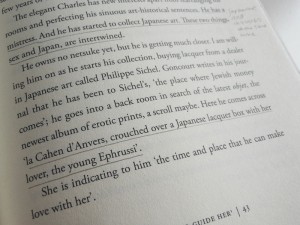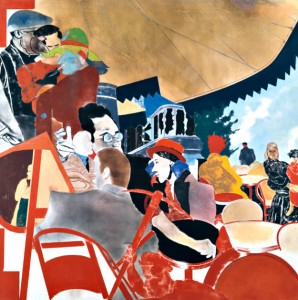Kitaj’s canvasses are riddled with references to artists and scholars, from Erasmus to Herman Melville, from Fra Angelico to Rosa Luxemburg. From a formal perspective, Kitaj’s obsessive use of citations reflects on the visual impact of images and names, signs and references. Conceptually, citations can involve finding artistic forefathers, and building an intellectual community. This is what I find particularly moving about Kitaj’s work: the artist peoples his paintings, like dream worlds, with “adopted ancestors,” who interact with one-another. → continue reading
Riddled with References
Jewish Halloween
Candy is a tricky matter for synagogues on Simhat Torah, the holiday celebrating the Torah and its yearly reading cycle. On this evening, the Torah scrolls are carried around the synagogue in festive processions and worshippers sing, dance, and throw sweets for children to collect.  In small synagogues, this procedure is fairly straightforward.
In small synagogues, this procedure is fairly straightforward.
But large synagogues can have issues with Milka-bars and Twixes flying through the air. To be fair, not many adults enjoy a barrage of caramels raining down on their heads, no matter the brand, no matter the degree of religious devotion. And to be very fair, bonbons thrown from synagogue balconies can be hazardous for the Torah scrolls, too. → continue reading
An Exhibition in Book Form
An unexpected success in England and still climbing bestseller rungs all over the world, The Hare with the Amber Eyes by Edmund de Waal is an exhibition in book form. The author, a potter, tells the history of his Jewish banking family, the Ephrussis, via the artifacts it collected, cared for, and bequeathed. 
The objects gain meaning via detailed descriptions. Who acquired them, at which time, for what purpose? What do they say about their buyer’s character, heritage, and destiny? Among the artifacts is the title-giving “Hare with Amber Eyes,” one of 264 Japanese netsuke wood and ivory carvings, which changes hands many times. → continue reading
